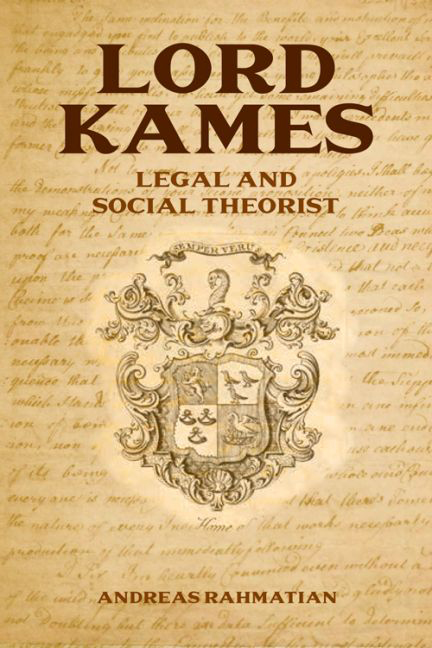Book contents
- Frontmatter
- Contents
- Preface
- Bibliography of Works by Lord Kames and Abbreviated References
- I Introduction
- II Aesthetics
- III Moral Philosophy I: Principles
- IV Moral Philosophy II: Development
- V Political Philosophy, Anthropology and Commerce
- VI Legal History, Legal Science and Comparative Law
- VII Property
- VIII Equity
- IX Obligations and Enforcement
- X Criminal Law
- XI Lord Kames's Influence on Some of the Founders of the United States
- XII A Critical Conclusion
- Bibliography
- Index
XII - A Critical Conclusion
Published online by Cambridge University Press: 12 September 2017
- Frontmatter
- Contents
- Preface
- Bibliography of Works by Lord Kames and Abbreviated References
- I Introduction
- II Aesthetics
- III Moral Philosophy I: Principles
- IV Moral Philosophy II: Development
- V Political Philosophy, Anthropology and Commerce
- VI Legal History, Legal Science and Comparative Law
- VII Property
- VIII Equity
- IX Obligations and Enforcement
- X Criminal Law
- XI Lord Kames's Influence on Some of the Founders of the United States
- XII A Critical Conclusion
- Bibliography
- Index
Summary
One could conclude this book by restating a condensed version of Kames's main theories and opinions. But the presentation of Kames as a legal and social theorist was also directed at serving as a starting point for one's own reflection and analysis, inspired by some of Kames's views for further elaboration and, certainly often, for disagreement. Kames can be an impulse and ferment for the development of one's own independent thinking. This is what he always wanted to instil in others. Kames is not a purely historical figure of a past era but a theorist who is still relevant. It is therefore better to summarise some characteristic aspects of his positions, and to sketch out a beginning for further critical interpretation.
The core of Kames's philosophical-legal thinking is intuitionist morality: the ‘moral sense’ within a conjectural approach to ‘human nature’, although this ‘science of man’ is supposed to be ascertained empirically. Following Francis Bacon and René Descartes, the scientific revolution of the seventeenth century that brought about the modern natural sciences was to be applied to human psychology and the development of human societies and its political systems. The mechanistic-deterministic idea of social conceptions in the Scottish Enlightenment, modelled upon the natural laws in physics and astronomy in particular, shines through in Kames's idea of the moral sense. There is an understanding that every human being, no matter in whichever historical epoch, in whichever social class and economic situation, in whichever cultural environment, subjected to whichever form of education, has an innate moral sense, which is uniform and the result of a perfect regularity of the human species. The moral sense provides all human beings with the ability to distinguish right from wrong, and it is the root for a sense of duty and obligation – to society as well as to oneself. A mirror image of the moral sense is the innate sense of intrinsic beauty and relative beauty: relative beauty is the beauty of utility: does the object in question also relate to some good purpose or is it only visually pleasing?
- Type
- Chapter
- Information
- Lord KamesLegal and Social Theorist, pp. 334 - 340Publisher: Edinburgh University PressPrint publication year: 2015

